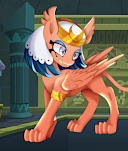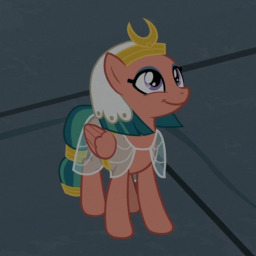
This story is a sequel to Tears for Mercy
When a war and plague ravage her people and sends them to Tartarus, Somnambula makes the decision to give them a second chance.
By raising them.
Part of the Corrupt Pillars Anthology
Content Warnings for the following: Death, Decapitation
Edited by: EileenSaysHi
Preread by: The Sleepless Beholder, Dewdrops on the Grass



























Interesting story. I would say it's more dark than horror. The shuffled chronological order is clever, and, as I feel, does contribute to the story for the most part, instead of being just a literature gimmick.
On the other side, still a lot of questions left unanswered, like whether Hisan had anything to do with this. I'm not sure if they're hinted in the prequels, or possibly sequels, 'cause I haven't read them. It's a bit weird that you go with Greek mythology for this, while Somnambula is heavily depicted as a ponified Egyptian. The mismatch kind of knocked me off the immersion a bit. In the second last chapter, Somnambula's final remark seemed to be way too heartless for my liking. I would prefer her pondering more about hope and how it drived her to do the necessary cruelty. It better matches her personality that way.
And I feel it's a bit of a missed opportunity that you didn't draw the connection between 'Hope' and the desperate attack of Princedom on Egypt (or whatever Somnambula's country was) in chapter 6, and the horror it caused. Goes well with the theme of the story.
Less horror, more, well, Hades. This was a good story and made interesting use of Somnambula and Thanatos. I do admit that the use of Greek gods in such an Egyptian setting felt off, though.
11718168
11717936
A reminder that Greece infamously occupied Egypt for a significant time due to Alexander the Great during the Hellenistic period.
11718213
Occupation is different from cultural assimilation. The Egyptians never adopted the Greek mythology. It's actually the opposite, the Ptolemians (the Greek-decended rulers of Egypt during the time you mentioned) adopted the Egyptian gods, only created and promoted a few "hybrid" gods like Serapis (kind of like a combination between Osiris, the Egyptian counterpart of Hades, and other Greek gods) to legitimize their rule. So if you want to mimic that era, you'll need to use Serapis in place of Hades, and Thanatos would still be Anubis.
I really enjoyed this! I kind of wish it had one more "present day" (or would that be "post mortem") scene to show more about what Somnambula has become, but the point of the final chapter is well made. And while it took some getting used to, I think this makes good use of the anachronistic storytelling method; telling it out of order lets the story develop its different themes well.
Nice work, Otter!